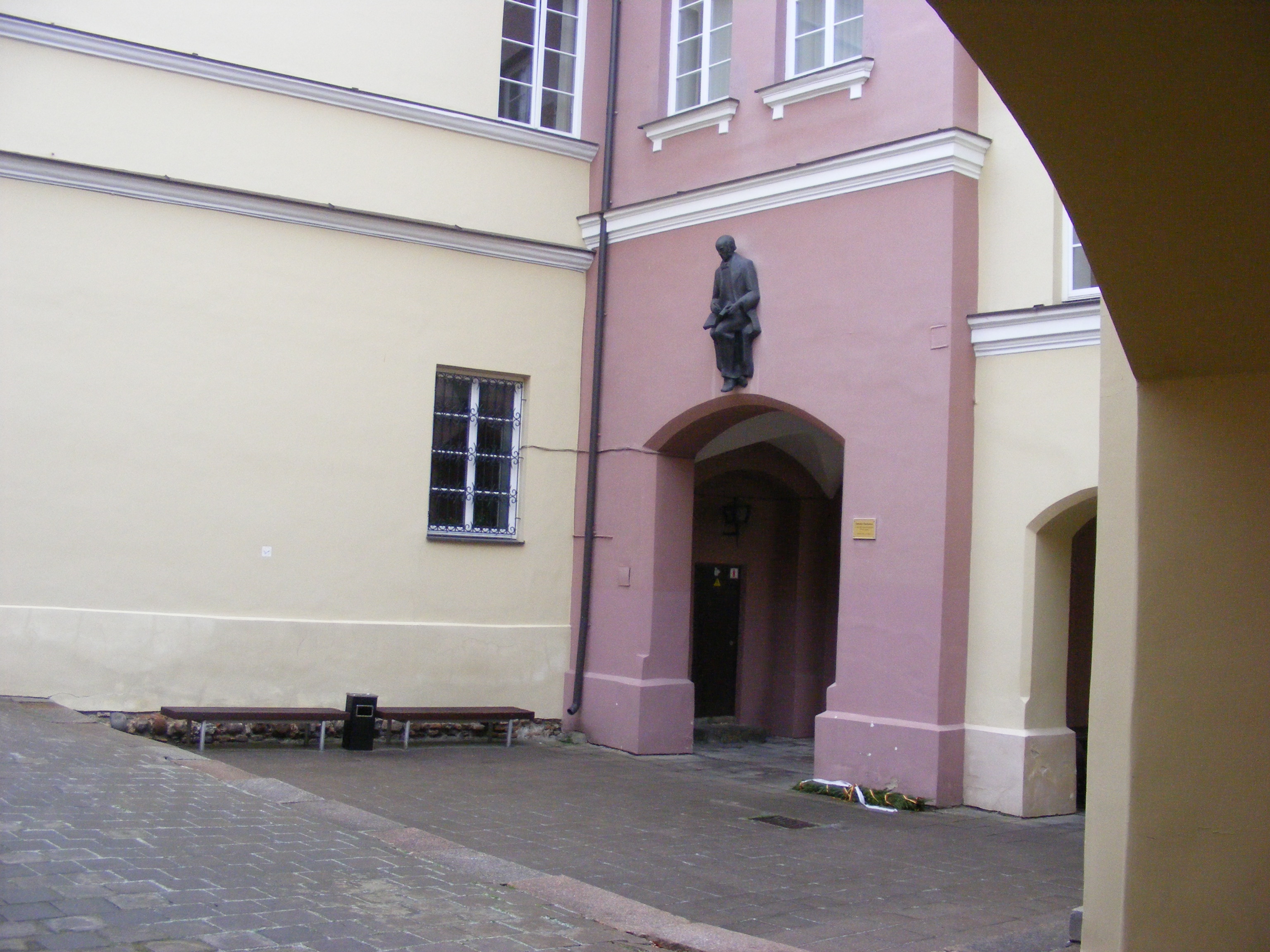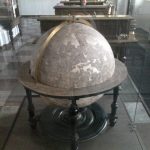
Vilnius University was the first observatory center in Eastern Europe and the 4th in the worldWhite Hall now houses unique astronomical instruments and a reading roomThe narrow staircase leads to the observatory tower, which reveals a panorama of the Vilnius Old TownAll photos are copyrighted by Vladislav B. Sotirovic© Vladislav B. Sotirovic 2023
Continue Reading

Hostel Courtyard of the Old Campus of the Vilnius UniversityIn the late 19th century all houses of the courtyard were reconstructed and in the early 21st century water supply and sewerage systems were installed. Apartments were rented in those housesInterior of the present-day Faculty of Philosophy. After the reconstruction was completed in the spring of 2005, the Faculty of Philosophy was relocated hereAll photos are copyrighted by Vladislav B. Sotirovic© Vladislav B. Sotirovic 2023
Continue Reading

Kybyn (pl. Kybynlar) is the most popular Karaite dish in Lithuania, which is a roll made of leavened dough in the shape of a half-moon, whithlamb and beef insideA Karaite wooden house with its back stickling out into the street because of a lack of room, and always with three windows - one for God, one for Vytautas, and one for a guestA Karaime hiuse in New TrakaiAll photos are copyrighted by Vladislav B. Sotirovic© Vladislav B. Sotirovic 2018
Continue Reading
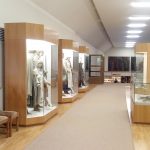
The museum is located in the north wing of the Old Arsenal and looks at Neolithic, Bronze and Iron Age Lithuania followed by the various tribes that inhabited the area until they combined to form a state in the 13th centuryThe museum displays object found in burial sites, such as pins, amulets, rings, brooches, knives or necklaces. You can as well as see regional dressses of Lithuanian tribes before the formation of the state in the mid-13th century The museum shows a hoard of some 16.000 17th-century coins found in 1999 in Vilnius. It is believed that the hoard may have been hidden during the 1700-1721 Great Northen War. Nevertheless, it is the largest collection of old coins to be found in Lithuania All photos are copyrighted by Vladislav B. Sotirovic© Vladislav B. Sotirovic 2020
Continue Reading
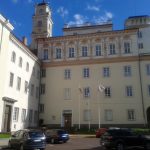
The north wing of the Library Courtyard with the building of the Faculty of History of the Vilnius UniversityThe entrance to the Central Library of the Vilnius University is decorated by the memorial door in 2001 for the 450 year anniversary of the first book printed in the Lithuanian language (1547)The main building with the main entrance to the Vilnius University with the Rector Office seen from the Library CourtyardAll photos are copyrighted by Vladislav B. Sotirovic© Vladislav B. Sotirovic 2020
Continue Reading
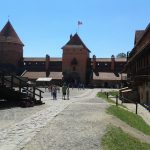
Trakai Island Castle is comprised of two parts - the bailey (grand courtyard of the lower part of the castle) and residential palace (upper part of the castle), which is divided by a canal, which at the time was filled with lake waterIn bailey lived the castle's garrison, which was for defending. The courtyard was used for general purposes The bailey of Trakai Island Castle has four defensive towers including gate towerAll photos are copyrighted by Vladislav B. Sotirovic© Vladislav B. Sotirovic 2019
Continue Reading

A fresco by P. Repšys created in 1976-1985, which depicts scenes from Lithuanian mythologyTo enter the Lithuanian Philology Centre is possible from Mathias Casimirus Sarbievius CourtyardThe fresco composition is painted for the occasion of the 400th years anniversary of Vilnius University establishment (in 1579)All photos are copyrighted by Vladislav B. Sotirovic© Vladislav B. Sotirovic 2018
Continue Reading

Its foundations are superimposed on the remains of a square tower, one of the oldest brick buildings in Lithuania, whose bricks are bound in the pre-Cothis (Baltic) manner An oval four-story tower with loopholes was built on these remains. Originally, it was a defensive tower of the Lower CastleThe underground square part dates from the 13th century, and the round part - from the late 14th century All photos are copyrighted by Vladislav B. Sotirovic© Vladislav B. Sotirovic 2019
Continue Reading

The historical building in Tyzenhauzų Str. in VilniusTyzenhauzų Str. building in VilniusTyzenhauzų Str. building in VilniusAll photos are copyrighted by Vladislav B. Sotirovic© Vladislav B. Sotirovic 2021
Continue Reading

Bronze door of the Central Library of Vilnius University. It portrays the university's history (est. 1579) along with that of Konigsberg's University (est. 1544)The Observatory Tower, on the spire of which the Jesuit university founders placed an IHS monogram of JesusThe building's façade is decorated in Rococo-style window framing with sun and Zodiac signes, with mathematical and astronomical instruments in between the windows All photos are copyrighted by Vladislav B. Sotirovic© Vladislav B. Sotirovic 2018
Continue Reading
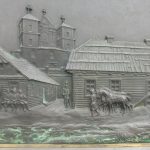
A plate devoted to Napoleon's Army in New Trakai in 1812A plate devoted to Napoleon's Army in New Trakai in 1812A plate devoted to Napoleon's Army in New Trakai in 1812All photos are copyrighted by Vladislav B. Sotirovic© Vladislav B. Sotirovic 2018
Continue Reading

After being baptized in 1251 into the Roman Catholicism in 1251, Grand Duke Mindaugas built the first cathedral in Vilnius on the site of the present-day Cathedral Basilica (Cathedral of St. Stanislaus and St. Vladislaus). Before that, in pagan times an altar, a sacred fire or even a Perkūnas sanctuary was located on the site of today's Cathedral Basilica The creation of the Lithuanian state started as late as the 13th century. Its first outstanding ruler Mindaugas was baptized in 1251 and crowned King of Lithuania on July 6th, 1253. Today, July 6th is a national holiday of Lithuanian statehood It is assumed that it was Mindaugas who built the first Cathedral in Vilnius. Traces of the original Cathedral incorporating Romanesque style features have been discovered in the vaults of the present Cathedral. After Mindaugas's death, the Christian (Roman Catholic) Cathedral was turned into a place of pagan worship. The author ...
Continue Reading
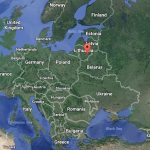
A geographical centre of Europe - 25 km far from Vilnius. From 2015 Summer You will get a special Certificate that you have visited the Geographical center of Europe. Don't miss the chance to get it for freeThe Baltic States of Europe - Estonia, Latvia & LithuaniaVytis (The Knight) - The Coat of Arm of both historical Grand Duchy of Lithuania and present-day the Republic of LithuaniaOrigins of images: Facebook, Twitter, Wikimedia, Wikipedia, Flickr, Google, Imageinjection & Pinterest.Read our Disclaimer/Legal Statement!Donate to Support UsWe would like to ask you to consider a small donation to help our team keep working.
Continue Reading

Until the 15th century, the castle was the residence of the Lithuanian Grand Dukes. The complex was built from the beginning of the 14th century to the beginning of the 15th century The castle is comprised of two parts - the bailey and the residential palace, which is divided by a canal, which at the same time was filled with lake waterThe castle is surrounded in a circle by a two-story wooden galleryAll photos are copyrighted by Vladislav B. Sotirovic© Vladislav B. Sotirovic 2018
Continue Reading

Grand Duke Gediminas is considered as the founder of the city of Vilnius. The monument is located in front of the Royal Palace and Cathedral Basilica in the very downtown of VilniusGediminas was a diplomatic politician, creating ties with the Roman Pope and other European rulers. He created favourable conditions for merchants and guildsmen to come to the city. Gediminas was a Grand Duke of the Grand Duchy of Lithuania from 1316 to 1341During the time of Gediminas, people of different ethnicities and confessions began to live in Vilnius. He is the founder of the Gediminian-Jagelonian ruling dynasty of Lithuania and later of Poland as well (till 1572)All photos are copyrighted by Vladislav B. Sotirovic© Vladislav B. Sotirovic 2018
Continue Reading

A monument to dr. Jonas Basanavičius in Vilnius in front of the building of the Lithuanian National PhilharmonicDr. Jonas Basanavičius chaired the session of Lithuanian Council that adopted the Act of Independence of Lithuania on 1918-02-16. He was the first to sign the Act of the Proclamation of the Lithuanian IndependenceBalancing between Lithuanian and Polish interests, he refused to participate in the opening of the Polish Stefan Batory University (today Vilnius University)All photos are copyrighted by Vladislav B. Sotirovic© Vladislav B. Sotirovic 2020
Continue Reading

The Old Campus in the Old town - Rectorate building. On April 1st, 1579 the King of Poland and Grand Duke of Lithuania Stephen Bathory issues a royal charter recognizing the Jesuit College into a universityThe Old Campus in the Old town - Rector's Office and former Astronomical Observatory building (right) and the Central Library building (left) with the Central Library Courtyard in front of the buildingsThe History Facutly building (left) and the Central Library building (right) with the arched gates to Mikalojus Dukša Courtyard (left) and Mathias Casimir Sarbievius Courtyard (forward). The Old Campus of the university has 13 courtyardsAll photos are copyrighted by Vladislav B. Sotirovic© Vladislav B. Sotirovic 2018
Continue Reading

Juliusz Słowacki's bust in the courtyard of house No. 20. On the same building, there is a memorial plaque to Ferdynand Ruszczic House No. 22 of the Medical Collegium of Vilnius University. A Gothic building belonging to Duke Constantine Ostrogsky and later to the gear hetman of the Grand Duchy of Lithuania Christopher Radziwiłł is mentioned in historical sources in 1508. In 1683 the house was bought by Vilnius University. The backside of St. Johns' Church of Vilnius University is seenVilnius University's first botanical garden was created in the courtyard in 1782 as well as a greenhouse All photos are copyrighted by Vladislav B. Sotirovic© Vladislav B. Sotirovic 2019
Continue Reading
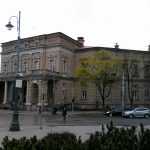
The Library of the Lithuanian Academy of Sciences was established in 1941 together with the Academy of Sciences, in the building of the former State Wróblewski LibraryBetween two world wars, State Wróblewski Library was one of the largest libraries in Vilnius. It was founded by lower Tadeusz Wróblewski. In 1941, the new Library inherited from it some 163.000 volumes, more than 35.000 manuscripts, large collections of numismatics, cartography, and artworksAfter WWII, the Library was supplemented by extensive collections from other libraries. Today, its stocks count more than 3.77 mln itemsAll photos are copyrighted by Vladislav B. Sotirovic© Vladislav B. Sotirovic 2020
Continue Reading
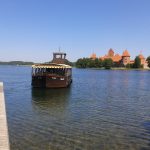
New Trakai is one of Lithuania's loveliest towns. It stretches out along a narrow peninsula between lakes, and it is a frequent destination for Vilnius residents, and visitors from abroad The largest lakes, such as Galvė, Skaistis, Bernardinai, and Totoriškės are connected together. Lake salmon breed in Lake AkmenaThe Trakai Historical National Park was included in the preliminary UNESCO World Heritage List in 2003. Trakai was Lithuania's second capital in Middle Ages. Its time of glory began under Grand Duke Vytautas the Great, who strengthened the Peninsula Castle, and built the most famous monument of Lithuania's ancient history - the Island CastleAll photos are copyrighted by Vladislav B. Sotirovic© Vladislav B. Sotirovic 2019
Continue Reading
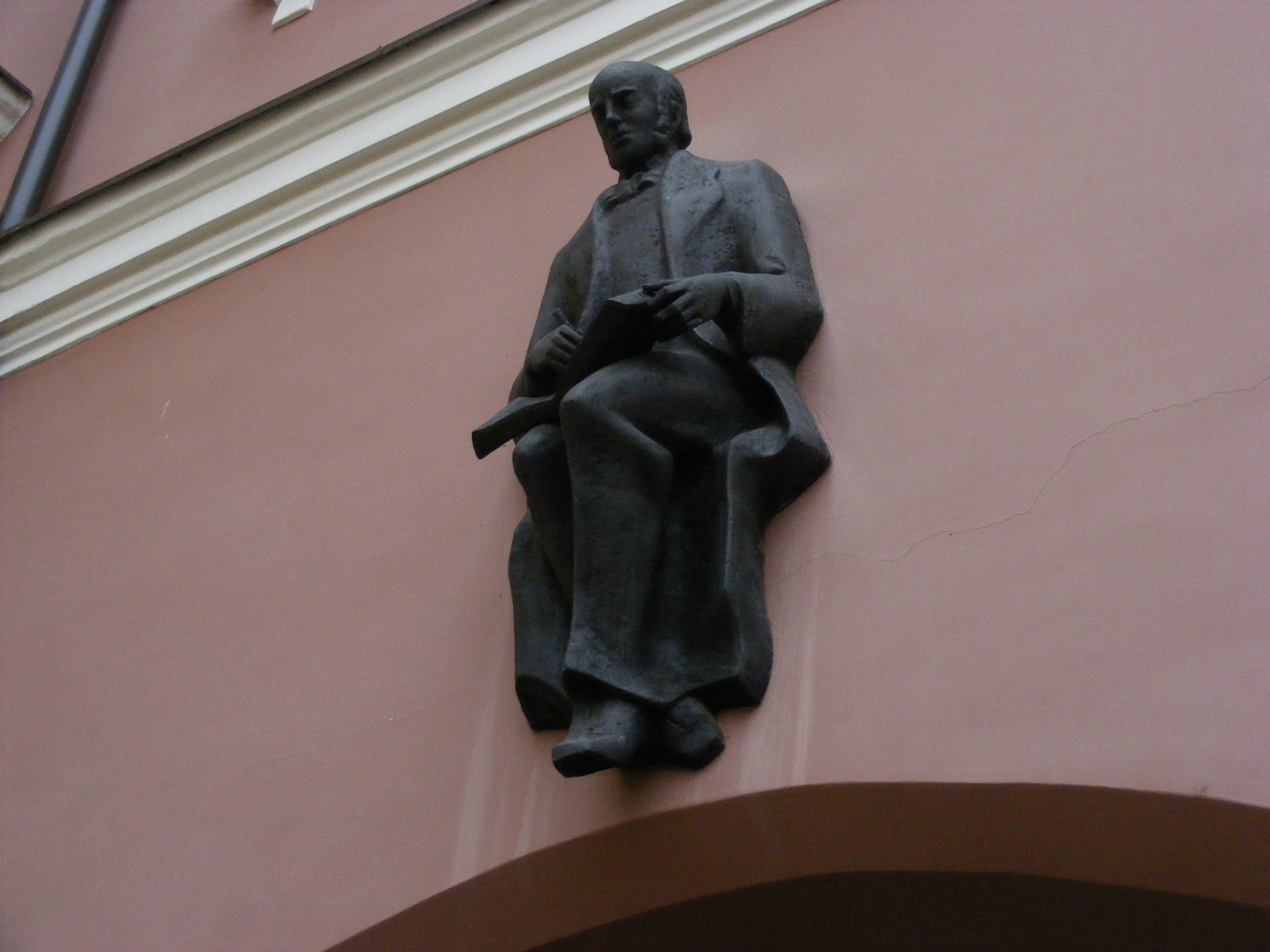 Simonas Daukantas was one of the first authors to start forming the concept of an ethnic Lithuanian nation and its cultural history. The first book on the history of Lithuania “The Deeds of Ancient Lithuanians and Samogitians” was written by Simonas Daukantas (1793-1864) in 1822 while he was still studying at Vilnius University
Simonas Daukantas was one of the first authors to start forming the concept of an ethnic Lithuanian nation and its cultural history. The first book on the history of Lithuania “The Deeds of Ancient Lithuanians and Samogitians” was written by Simonas Daukantas (1793-1864) in 1822 while he was still studying at Vilnius University The larger part of the premises in this courtyard belongs to the Faculty of Philology. The Institute of Foreign Languages is located here too
The larger part of the premises in this courtyard belongs to the Faculty of Philology. The Institute of Foreign Languages is located here too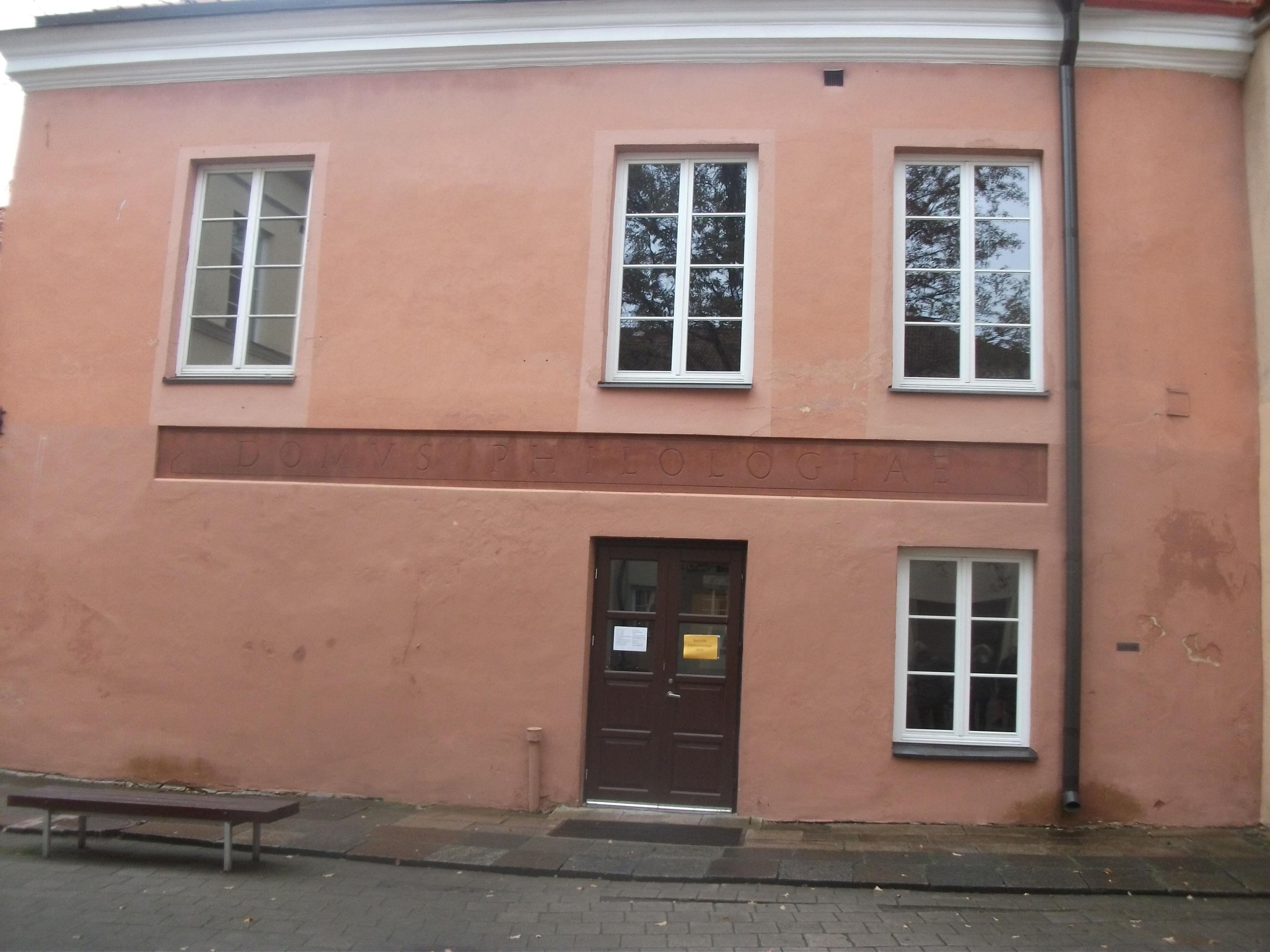 “Domus Philologiae” with the lobby of Muses on the first floor of the east wing is decorated by a fresco created by Rimtautas Gibavičius in 1969
“Domus Philologiae” with the lobby of Muses on the first floor of the east wing is decorated by a fresco created by Rimtautas Gibavičius in 1969




















